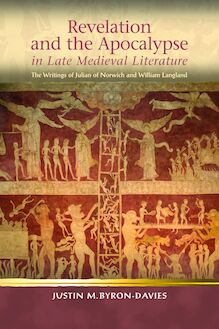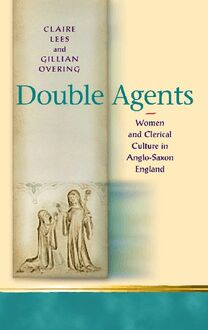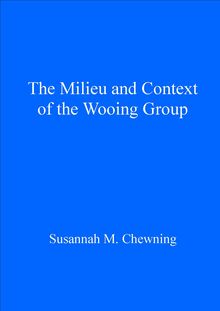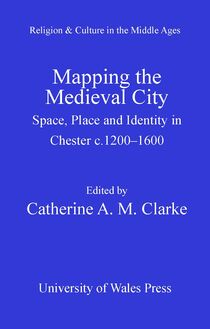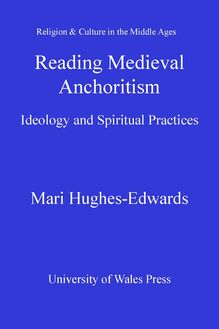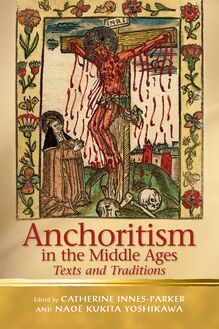-
 Univers
Univers
-
 Ebooks
Ebooks
-
 Livres audio
Livres audio
-
 Presse
Presse
-
 Podcasts
Podcasts
-
 BD
BD
-
 Documents
Documents
-
- Cours
- Révisions
- Ressources pédagogiques
- Sciences de l’éducation
- Manuels scolaires
- Langues
- Travaux de classe
- Annales de BEP
- Etudes supérieures
- Maternelle et primaire
- Fiches de lecture
- Orientation scolaire
- Méthodologie
- Corrigés de devoir
- Annales d’examens et concours
- Annales du bac
- Annales du brevet
- Rapports de stage
La lecture à portée de main
286 pages
English
Découvre YouScribe en t'inscrivant gratuitement
Je m'inscrisDécouvre YouScribe en t'inscrivant gratuitement
Je m'inscris
Obtenez un accès à la bibliothèque pour le consulter en ligne
En savoir plus
En savoir plus
286 pages
English
Obtenez un accès à la bibliothèque pour le consulter en ligne
En savoir plus
En savoir plus

Description
First printed in 2001 by the University of Pennsylvania Press, this book has been out of print for several years and is highly sought after by researchers in the field of Medieval cultural studies. "Double Agents" was the first book length study of women in Anglo-Saxon written culture that took on board the insights of contemporary critical theory, especially feminist theory, in order to elucidate the complex challenges of both the absence and presence of women in the historical record. That is to say, unlike the two earlier books on women in this period (by Fell, 1984, and by Chance, 1986), this is not a book about only those women in the written record (whether we think of it as historical or literary) of Anglo-Saxon England, it also tackles the question of how the feminine is modelled, used, and metaphorised in Anglo-Saxon texts, even when women themselves are absent.This book spans the entire Anglo-Saxon period from Aldhelm and Bede in the earliest centuries to Alfric and the anonymous homilists and hagiographers of the later tenth and eleventh centuries; it draws on Anglo-Saxon vernacular texts as well as Latin ones, and on those works most familiar to literary scholars (such as the "Exeter Book Riddles" or "Cadmon's Hymn", the first so-called poem in English, or the female "Lives of Saints") as well as historians (wills, charters, the cult of relics); it deliberately reconsiders, from the perspective of gender and women's agency, some of the key conceptual issues that studying Anglo-Saxon England presents (the relation of orality to literacy; that of poetry and sanctity to belief; and, the cultural significance of names, naming, and metaphors in Anglo-Saxon writing).
Sujets
Informations
| Publié par | University of Wales Press |
| Date de parution | 15 juillet 2009 |
| Nombre de lectures | 0 |
| EAN13 | 9780708322321 |
| Langue | English |
| Poids de l'ouvrage | 1 Mo |
Informations légales : prix de location à la page 0,1900€. Cette information est donnée uniquement à titre indicatif conformément à la législation en vigueur.
Extrait
RELIGION AND CULTURE IN THE MIDDLE AGES
Double Agents
Series Editors Denis Renevey (University of Lausanne) Diane Watt (Aberystwyth University)
Editorial Board Miri Rubin (Queen Mary, University of London) Jean-Claude Schmitt (École des Hautes Études en Sciences Sociales, Paris) Fiona Somerset (Duke University) Christiania Whitehead (University of Warwick)
RELIGION AND CULTURE IN THE MIDDLE AGES
Double Agents
Women and Clerical Culture in Anglo-Saxon England
CLARE A. LEES AND GILLIAN R. OVERING
UNIVERSITY OF WALES PRESS CARDIFF 2009
© Clare A. Lees and Gillian R. Overing, 2009
All rights reserved. No part of this book may be reproduced, stored in a retrieval system, or transmitted, in any form or by any means, electronic, mechanical, photocopying, recording or otherwise, without clearance from the University of Wales Press, 10 Columbus Walk, Brigantine Place, Cardiff, CF10 4UP. www.uwp.co.uk
British Library Cataloguing-in-Publication Data A catalogue record for this book is available from the British Library.
ISBN 978-0-7083-2183-6 e-ISBN 978-0-7083-2232-1
The rights of Clare A. Lees and Gillian R. Overing to be identified as authors of this work has been asserted by them in accordance with sections 77, 78 and 79 of the Copyright, Designs and Patents Act 1988.
Printed in Great Britain by CPI Antony Rowe, Chippenham, Wiltshire
For our mothers Winifred Pauline Lees and Rose Overing
Series Editors’ Preface Preface Acknowledgements, 2001 List of Abbreviations
Introduction
1
2
3
4
5
C ONTENTS
Patristic Maternity: Bede, Hild and Cultural Procreation
Orality, Femininity and the Disappearing Trace in Early Anglo-Saxon England
Literacy and Gender in Later Anglo-Saxon England
Figuring the Body: Gender, Performance, Hagiography
Pressing Hard on the ‘Breasts’ of Scripture: Metaphor and the Symbolic
Bibliography Index
ix xi xv xvii
1
19
56
101
149
204
231 249
S E ’ P ERIES DITORS REFACE
Religion and Culture in the Middle Ages aims to explore the interface between medieval religion and culture, with as broad an understanding of those terms as possible. It puts to the forefront studies which engage with works that significantly contributed to the shaping of medieval culture. However, it also gives attention to studies dealing with works that reflect and highlight aspects of medieval culture that have been neglected in the past by scholars of the medieval disciplines. For example, devotional works and the practice they infer illuminate our understanding of the medieval subject and its culture in remarkable ways, while studies of the material space designed and inhabited by medieval subjects yield new evidence on the period and the people who shaped it and lived in it. In the larger field of religion and culture, we also want to explore further the roles played by women as authors, readers and owners of books, thereby defining them more precisely as actors in the cultural field. The series as a whole investigates the European Middle Ages, from c.500 toc.1500. Our aim is to explore medieval religion and culture with the tools belonging to such disciplines as, among others, art history, philosophy, theology, history, musicology, the history of medicine, and literature. In particular, we would like to promote interdisciplinary studies, as we believe strongly that our modern understanding of the term applies fascinatingly well to a cultural period marked by a less tight confinement and categorization of its disciplines than the modern period. However, our only criterion is academic excellence, with the belief that the use of a large diversity of critical tools and theoretical approaches enables a deeper under-standing of medieval culture. We want the series to reflect this diversity, as we believe that, as a collection of outstanding contri-butions, it offers a more subtle representation of a period that is marked by paradoxes and contradictions and which necessarily reflects diversity and difference, however difficult it may sometimes have proved for medieval culture to accept these notions.
-
 Univers
Univers
-
 Ebooks
Ebooks
-
 Livres audio
Livres audio
-
 Presse
Presse
-
 Podcasts
Podcasts
-
 BD
BD
-
 Documents
Documents
-
Jeunesse
-
Littérature
-
Ressources professionnelles
-
Santé et bien-être
-
Savoirs
-
Education
-
Loisirs et hobbies
-
Art, musique et cinéma
-
Actualité et débat de société
-
Jeunesse
-
Littérature
-
Ressources professionnelles
-
Santé et bien-être
-
Savoirs
-
Education
-
Loisirs et hobbies
-
Art, musique et cinéma
-
Actualité et débat de société
-
Actualités
-
Lifestyle
-
Presse jeunesse
-
Presse professionnelle
-
Pratique
-
Presse sportive
-
Presse internationale
-
Culture & Médias
-
Action et Aventures
-
Science-fiction et Fantasy
-
Société
-
Jeunesse
-
Littérature
-
Ressources professionnelles
-
Santé et bien-être
-
Savoirs
-
Education
-
Loisirs et hobbies
-
Art, musique et cinéma
-
Actualité et débat de société
- Cours
- Révisions
- Ressources pédagogiques
- Sciences de l’éducation
- Manuels scolaires
- Langues
- Travaux de classe
- Annales de BEP
- Etudes supérieures
- Maternelle et primaire
- Fiches de lecture
- Orientation scolaire
- Méthodologie
- Corrigés de devoir
- Annales d’examens et concours
- Annales du bac
- Annales du brevet
- Rapports de stage
Signaler un problème
YouScribe
Le catalogue
Le service
© 2010-2024 YouScribe



